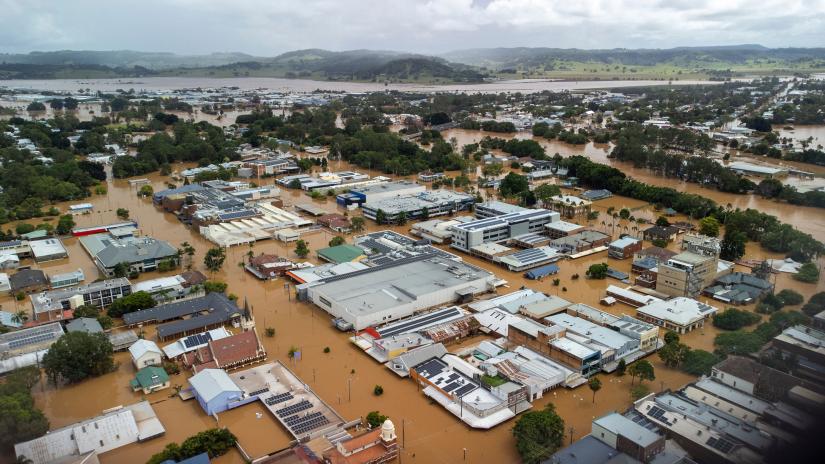Tempted by lower prices and a nice river view? Houses for sale in a flood zone are around 10% cheaper than surrounding areas, according to new research. However, the reduced price tag is not worth the extra risk and can burden buyers with long-term insurance costs.

Floodwaters in Lismore NSW in February 2022. Picture: Cloudcatcher Media/Adobe Stock
Researchers examined home sales data from the Richmond area on the outskirts of Sydney, along with 2019 and 2023 flood maps for the region. They found a 10.8% price discount in the AEP 100 flood zone, 4.4% in the AEP 500 flood zone, and none in the AEP 1000 flood zone.
AEP or “Annual Exceedance Probability” is used to express the likelihood of a flood occurring in a given area each year. AEP 100 is a 1% chance or a 1-in-100-year flood risk, AEP 500 is a 1-in-500-year flood risk, and AEP 1000 is a 1-in-1000-year flood risk.
Lead author Associate Professor Song Shi from the School of Built Environment at the University of Technology Sydney (UTS) said digital flood risk maps have shaped people’s perceptions of flood risk, however low-probably risk is often dismissed, and maps can be misinterpreted.
“Home buyers sometimes think that a 1-in-100-year flood risk means flooding will only occur once every 100 years, when in reality it means there's a 1% chance of such a flood happening in any given year,” he said.
“The chance of a flood occurring at least once in an 80-year lifetime is 55% for a 1-in-100-year flood and 15% for a 1-in-500-year flood. The likelihood of experiencing such devasting floods over a life span is much higher than people might think.”
The study shows that people tend to ignore flood risk beyond the AEP 500 flood risk zone. This can be dangerous, as extreme rain events, such as those recently witnessed in Spain that resulted in a devastating death toll, are rising due to climate change.
Home buyers sometimes think that a 1-in-100-year flood risk means flooding will only occur once every 100 years, when in reality it means there's a 1% chance of such a flood happening in any given year
Associate Professor Song Shi
“In Australia, more than one in 10 houses in Australia are situated in flood zones. Flooding from intense rainfall and overflowing rivers is the most common and costliest natural disaster,” said Associate Professor Shi.
“More residents are using digital flood maps to better understand their flood risk, and plan for severe weather events. However, our study shows that beyond a certain threshold, people tend to ignore the risk, which can lead to inadequate preparation for floods.”
The study, Cognitive limits of perceived flood risk on residential property values, with co-authors Dr Mustapha Bangura and Associate Professor Sumita Ghosh from UTS, was recently published in the International Journal of Disaster Risk Reduction.
The researchers found the cost of insurance for a house in a flood zone is a significant financial burden. In Richmond, median priced homes in the AEP 100 zone have an estimated flood premium potentially as high as $4,606 annually, compared to similar homes in a no-risk zone.
Residential properties exposed to flood risk are overwhelmingly overvalued, especially in coastal areas, the researchers warn, as property price discounts do not compensate for the additional insurance costs payable.
As climate patterns intensify, understanding flood risk is becoming essential for both homebuyers seeking to make informed choices and policymakers aiming to safeguard communities and manage the impact on real estate markets.
Also see The Conversation article by the study authors: We pay less for houses in one-in-100 year flood zones – but overlook risks of more devastating floods.

